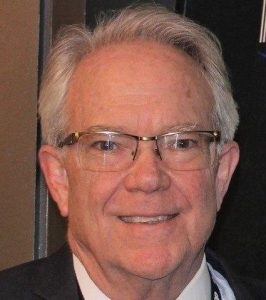In what has proven to be a most regrettable decision, former California Governor Jerry Brown back in 2012 foolishly eliminated the State CIO agency from his cabinet, and in the process returned the state’s IT management to a failed organizational structure of the past.
But with the recent appointment of State CIO Amy Tong to a different position in the administration of the state’s current chief executive, Gavin Newsom, the governor has a fleeting opportunity to rectify that ten-year old mistake.
Unfortunately, the prospects for a course correction on IT management are not encouraging. That’s because the state has initiated a search for a new state CIO whose job description continues to place the state CIO’s organization down within the bowels of the Government Operations Agency, rather than reporting directly to the governor, where it belongs.
Empowering Better IT Governance
In a new book coming out mid-year in 2022, I authored a chapter on California’s well-documented woes in successfully managing its multi-billion dollar IT investment. The book, Technology vs. Government: The Irresistible Force Meets the Immovable Object, is the brainchild of former California Assemblyman Lloyd Levine, who along with authoring much of the book’s content is also responsible for curating several chapters from other prominent contributors.
As I relate in my chapter, Gov. Brown inherited what was considered one of the strongest CIO governance models in the country created by his predecessor, Arnold Schwarzenegger. After Schwarzenegger’s reelection in 2006 his administration shepherded through legislation to facilitate a massive reorganization of the state’s IT personnel and infrastructure, including most significantly, the consolidation of state data centers and telecommunication networks under a new cabinet agency.
As a member of the original Schwarzenegger transition team, I had been a vocal proponent of the changes. They went a long way toward accomplishing a strong CIO governance model including significant statewide infrastructure consolidation under a brand-new cabinet agency, as opposed to being relegated to just another department beneath a cabinet-level agency.
The book also details how following a nationwide search, my friend Teri Takai – after insisting upon cabinet membership status – accepted the governor’s offer and was appointed as the fourth state CIO in 2007 to head up the newly christened California Technology Agency. Takai had been an IT executive with Ford Motor Company, was Michigan’s CIO, and had a solid track record during her time in Lansing under Governor Jennifer Granholm.
I wrote how Secretary Takai oversaw a revolutionary reformation of government IT in the state of California, whose economy would rank as the world’s fifth largest if it were its own nation.
Growing from a small office of less than 50 employees, her agency would now directly oversee nearly a thousand employees, with a budget of more than half a billion dollars and control virtually every aspect of state IT spending for all 150 state departments. Over the next three years, Secretary Takai navigated the rocky shoals of the state bureaucracy, and avoided the significant IT project failures that had so often afflicted the state of California.
With the seat on the cabinet, and as a peer with the other program agency heads, IT issues were a topic at every meeting, and the governor took notice. Program departments could no longer admit that IT projects were an insignificant part of their job. The stage had been set whereby both department program and IT leadership would jointly assume responsibility for the success or failure of their IT initiatives.
In addition to her cabinet status as a prerequisite to accepting the job from Governor Schwarzenegger, Takai had another stipulation – regularly scheduled meetings each month with the governor. “I did not want my access to be delegated down. It was important that I had direct access. It’s a perception issue. If you have a regular, standing meeting with the governor, word gets around the Capitol really quickly, and it’s very hard to discount,” Takai said.
In 2010, Takai accepted an Obama administration appointment as CIO at the Department of Defense. She left her successor with arguably the strongest CIO governance model among all state governments in the U.S., and perhaps within the Federal sector as well.
Her successor would inherit the kind of organization whereby significant and far-reaching, IT- enabled efficiencies could now be successfully implemented in government operations at all levels.
Another Chance to Improve
Less than two years later, however, the tables had turned.
Following a reorganization by the Brown administration in 2012, the state CIO was removed from the cabinet – eliminating that critical peer-to-peer relationship with the other secretaries, let alone any standing meetings with the governor. And, inherent in this action was a signal to the other secretaries and department heads – that the CIO position was clearly not important to the governor.
While Gov. Newsom neglected to empower the CIO’s office when he became governor in 2019, he now has the opportunity for a meaningful do-over.
Whether he seizes that chance or lets it go by will not be for lack of understanding what’s at stake. The governor is considered a “techie” in his own right, and authored a 2013 book on government IT, Citizenville: How to Take the Town Square Digital and Reinvent Government.
He understands the stakes – and considering how technology, especially remote work and citizen digital services were able to function only through technology during this pandemic – he should understand that virtually everything government does relies on enabling technologies.
Restore the CIO office’s to cabinet agency status, Governor, and fix how the State of California does IT.

